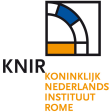Summary
- This field survey is centred around the fortified site of Muro Maurizio and is part of the Brindisino project (Burgers 1998) and the Salento Isthmus project (Burgers 2009; Attema et al. 2010) conducted by the Amsterdam Institute of the Vrije Universiteit of Amsterdam (AIVU). The primary goal of these projects is to elucidate the development of settlement patterns and urbanization in the context of the integration of the native society into the Graeco-Roman world. The study of the relationship between settlement patterns in the countryside and spatial evolution of the fortified centre of Muro Maurizio is pivotal in this survey.
Project Dates
- 1993 - 1998
Periods
- No period data has been added yet
- 1800 BC
- 1000 BC
- 600 AD
- This survey covered a total surface of about 2 square km, incorporating in the centre the large fortified zone of Muro Maurizio. Interpretations of the debris in terms of sites, concentrations or scatters are (at least during the recorded phase) avoided: instead the surface debris is treated as a spatial and temporal continuum. Only after the recording of the qualitative and quantitative characteristics of the debris, the team tries to identify the anomalies (high density concentrations, notoriously ‘sites’) in this continuum and reconstruct the debris formation processes. In the field 3-4 surveyors walked side by side, counting the artefacts and assessing changes in density. Artefact estimates are recorded by the team leader every time density changes (at interval of 5 to 10 artefacts per square meter) on a 1:500 map. The present day agricultural lots are taken as the basic research units (these units are generally small and bordered by stone fences). The team documented in the rural countryside a discontinuous spread of surface debris in which isolated high density concentrations can be spotted (in total 4). Within the fortified zone of Muro Maurizio, a grid of 379 squares is instead employed: lots are divided into squares of 25 x 25m (with possible deviations if the form of the field does not allow a uniform grid). These lots were surveyed in teams of 3-4 persons, covering transects located 4 meters apart. The density of surface finds turned out to be much higher indeed than in the rest of the research area, with peaks of 40-50 artefacts per square m and various large concentrations are distinguished (between 500 sq m to 3 ha in size). Outside the walled area the average density amounted to 20 items per ha, and 4 more concentrations were found with a minimum distance of 300 m. The influence of post-depositional processes on the transformation of the archaeological record has been carefully taken into account and tested using test excavations and drillings; it is especially evaluated the effect of modern agricultural practices and ploughing on the displacement of the debris.
Other Comments
- Director: Prof. dr. G-.J. Burgers ................................................................................................................................ This record has been produced by the Fasti Online Survey team within the framework of the KNIR student internship 2020 'Digital Field Survey Archaeology'.
- Assess and trace changes in settlement patterns, land use and town-countryside relations in the territory around the walled site of Muro Maurizio from the Bronze age to the later Roman phases, and put this into the larger regional context of the Salento Isthmus.
- Dutch Foundation for History, Archaeology and Art History; Netherlands Organisation for Scientific Research; Royal Netherlands Institute in Rome; Vrije Universiteit of Amsterdam; Ministero dei Beni e delle Attività Culturali;
Director
-
Director
- G.-j. L.m. Burgers




![Edit [ed]](/survey/skins/fastisur/images/plusminus/edit.png)
![View [view]](/survey/skins/fastisur/images/plusminus/view.png)